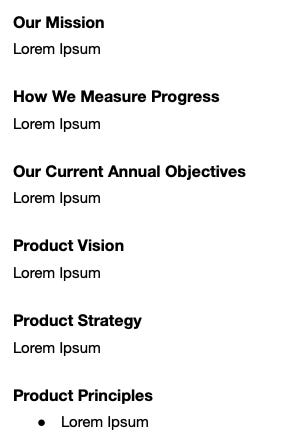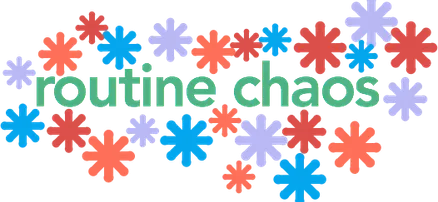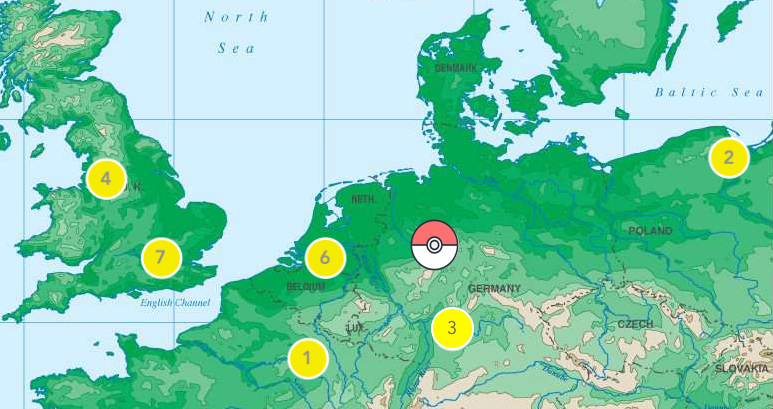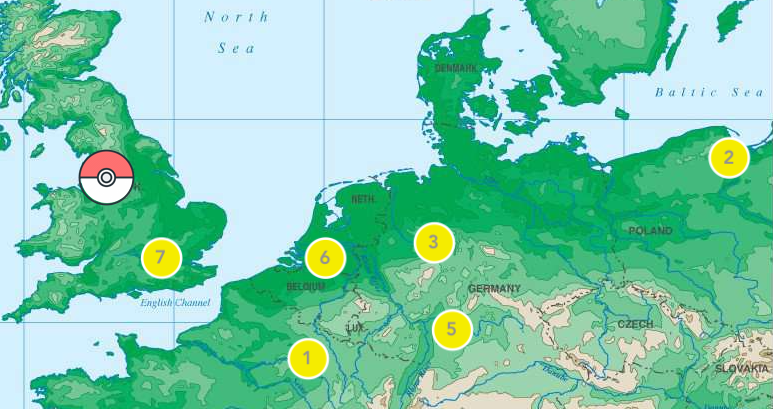Strategic context (and how to use it)

(We’ll keep rolling with this experiment - if you want to listen to this, you can do that here)
Here's the most important thing you need to know about strategy:
if you can get the word "strategy" or "strategic" added to your job title, people will pay you more money even if you keep doing the same thing1. It's one of those jokes that is funny because it's true.
The second most important thing you need to know about strategy...
is that it's about defining choices and trade offs you're making in pursuit of a specific objective. The negatives are as important as the positives - what objectives aren't you pursuing, what are you not going to do to get there. If you can't use your strategy to figure out what you're not going to do, then it's already a failure.
The third most important thing...
is related to strategic context for products2. Your strategic context document is about building collective intelligence within your team, and creating a shared way of thinking about problems you're solving. It establishes common mental models and frameworks for making sense of the space in which you operate. Those two things combine to create one of the best mechanisms for empowering everyone on your team to solve the most important problems that you need to solve to nail your strategy.
Wait, what's that? You don't have a strategic context document? It's OK - you're not alone. Most of the companies I consult with don't have one, and it's one of the first things I work with them on. It's not that they don't have a strategy or that they don't understand their strategic context; it's that it usually lives in a bunch of people's heads and hasn't been made explicit.
So I have a template I share with them, and before I link to it here I need to first say that I absolutely and shamelessly am taking this from the work of Marty Cagan and the Silicon Valley Product Group. I'm not going to explain everything that goes into the strategic context because I can't possibly top the way that Marty articulates it here.

But Marty doesn't have a template3, and I do...and you can make a copy of it here.
Ways to use the strategic context:
As a product manager...
- if your company has a well-defined strategic context - which is not just an organizational strategy, but product specific strategy - use it as a tool to think through specific challenges, through prioritizing initiatives for your roadmap, for defining important measures of success for your team overall and for your specific initiatives.
- if your company doesn't have a strategic context, see how much of it you can flesh out on your own. Take note of where it's unclear. Once you have the best version of it possible, see if you can work with your head of product or whoever should actually own it to flesh it out as a means of helping you to think through your work and prioritize effectively.
As a product leader...
The strategic context is an incredible tool for stress testing the quality of your thinking. Because you're writing it out as a document and not just doing bullet points on a slide or something, you can often feel when you're being vague or imprecise. You can tell when you're kind of guessing about something rather than asserting it out of clarity. You should probably be able to put together a complete draft of this to calibrate with the rest of your senior team - even if it's with areas where there are questions. Often, if you're running into some major questions or uncertainties it either indicates a gap in the larger strategy, or it shows an area where you or your broader team have been indecisive.
But then you go out and clarify those things, or you define what you need to do to test out uncertain risks and assumptions...and you stick it in that document that you're doing that.
This is a living artifact, but it's not one that should be going through frequent, significant change. If you don't think you can live with what you're putting in here for 6-12 months, then either:
you shouldn't put it in and are probably getting too in the tactical weeds, or
you're in an early stage product, one that hasn't quite found the early signs of product market fit yet. If that's you, then you actually don't need this whole template4. This is a whole different post altogether5.
Make no mistake - this is work, and if you're doing it for the first time it's going to be clumsy and a bit awkward. You're first time will probably go through a few revisions, especially as you get feedback from others. And it will improve the quality of your strategic thinking...but there aren't really any shortcuts, so start getting in your practice now.
Though if you work in product, other product people will also pity you because why just work on product strategy? Product development is where the real fun is. ↩
Which might actually be the sneaky #1 most important thing. ↩
He probably does. ↩
And you are probably still in that stage where your team is small enough that you're working out of a lot of shared context already. ↩
And maybe I'll get to that one day if I hear from enough people that it would be useful. ↩





